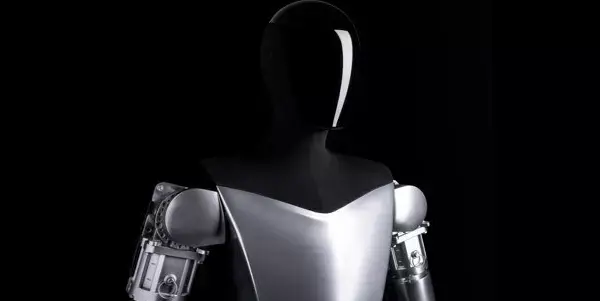Tesla Optimus

A futuristic humanoid robot developed by Tesla that aims to perform basic tasks. It incorporates advanced automation and AI technology
Tesla Optimus: A Deep Dive into Tesla's Humanoid Robot
Tesla's Optimus is a groundbreaking humanoid robot designed to automate a range of basic tasks, marking a significant step forward in the field of robotics and artificial intelligence. While still under development and not yet widely available, Optimus holds immense potential for transforming various industries and even domestic life. This article explores its capabilities, applications, and market positioning.
What Tesla Optimus Does
Optimus is designed to perform repetitive and physically demanding tasks that are currently handled by humans. Its primary function is to act as a versatile, adaptable worker capable of handling diverse tasks within a structured environment. This includes, but isn't limited to:
- Material Handling: Moving objects, loading and unloading materials, and transporting goods within a warehouse or factory setting.
- Assembly Line Work: Performing repetitive assembly tasks, potentially speeding up production lines and increasing efficiency.
- General Labor: Carrying out tasks such as cleaning, maintenance, and organization in various settings.
Its functionality is enabled by advanced AI and automation technologies, allowing for autonomous operation and adaptability to new situations.
Main Features and Benefits
Several key features distinguish Optimus from other humanoid robots:
- Advanced AI: Optimus leverages Tesla's expertise in AI and machine learning for object recognition, task planning, and autonomous navigation. This allows it to operate with a degree of autonomy exceeding many competitors.
- Dexterous Manipulation: Equipped with sophisticated hands and manipulators, Optimus can interact with its environment with precision and dexterity, enabling complex tasks.
- Adaptability: Its AI allows for ongoing learning and adaptation, meaning its capabilities can expand over time with experience and software updates.
- Safety Features: Integrated safety mechanisms are designed to minimize the risk of accidents during operation.
- Integration with Tesla Ecosystem: Potential for seamless integration with other Tesla technologies and systems.
Benefits:
- Increased Productivity and Efficiency: Automation of repetitive tasks leads to faster production and reduced labor costs.
- Improved Safety: Handling dangerous or physically demanding tasks reduces risks to human workers.
- Enhanced Flexibility: Optimus can adapt to various tasks and environments, offering greater flexibility than specialized robots.
- Cost Savings: In the long term, the robot's cost can be offset by increased productivity and reduced labor expenses.
Use Cases and Applications
The potential applications for Optimus are vast and span several industries:
- Manufacturing: Assembly lines, material handling, quality control.
- Warehousing and Logistics: Order fulfillment, inventory management, transportation.
- Healthcare: Assisting with tasks in hospitals and care facilities.
- Construction: Performing repetitive tasks on construction sites.
- Retail: Assisting with stocking shelves and other retail tasks.
- Domestic Applications (Future): While still in the future, potential use for domestic tasks like cleaning or yard work.
Comparison to Similar Tools
While several companies are developing humanoid robots, Optimus stands out due to its integration with Tesla's existing AI infrastructure and its focus on practical applications. Compared to competitors such as Boston Dynamics' Atlas, Optimus emphasizes versatility and affordability over extreme agility or physical prowess, targeting a wider range of applications. The cost-effectiveness of Optimus's design and manufacturing, leveraging Tesla's existing production capabilities, will be a significant differentiator.
Pricing Information
Tesla has not yet released official pricing for Optimus. Given the complexity and advanced technology involved, it's expected to be a paid solution with a high initial investment cost. The exact pricing will likely depend on the specific configuration and features required. It is anticipated that the price will decrease over time with advancements in manufacturing and scale.
Conclusion
Tesla Optimus represents a significant leap forward in the field of humanoid robotics. While still under development, its potential impact on various industries is undeniable. As the technology matures and becomes more accessible, Optimus could revolutionize the way we approach automation, increasing efficiency, safety, and productivity across numerous sectors. The coming years will be pivotal in determining Optimus’s ultimate market impact and its role in shaping the future of work.